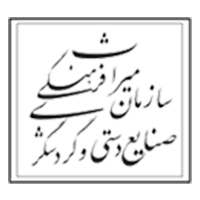rooms
Rooms of Haft Tappeh Museum
Haft Tappeh Museum has three show rooms. Each of these rooms has a specifically-defined theme according to which different objects and artifacts are displayed.
The objects demonstrate Elamite culture, mores, traditions, writing system, ritual ceremonies, and crafts such as pottery, casting, and architecture. Haft Tappeh Museum objects are largely composed of middle Elamite artifacts discovered from Haft Tappeh and Tchogha Zanbil; however, there are other objects from pre-Elamite (4th millennium B.C.E.) and post-Elamite (Achaemenid, Arsacid, Sassanian, and Islamic) eras in this museum as well.
First room:
The area of this room, which is actually the introductory room, measures 72 meters. This room carries the following objects:
- Pictures and posters of Dr. Negahban’s excavations at Haft Tappeh and Ghirshman’s excavations at Tchogha Zanbil
- Maquettes of the ziggurat and other constructions at Tchogha Zanbil
- Timeline covering prehistoric eras to the Islamic period
- Showcases’ directory panel

Figure 1: The first or introductory room

Figure 2: The timeline and maquette of Tchogha Zanbil Ziggurat
Second room:
This room measures 36 meters in area and is smaller in comparison with rooms 1 and 3. There are 3 showcases in this room as follows:
- Showcase 1: cuneiform inscriptions and clay tablets
- Showcase 2: finds from Abu Fanduwah excavations
- Showcase 3: ritual finds

Figure 3: Second room

Figure 4: Information panel in the second room
Third room:
This room, with 117 m of area, is the biggest room of the museum. There are six showcases in this room that are described as follows according to their contents, period of time, and their objects’ typology:
- Showcases 4 and 5: vessels
- Showcase 6a: tools and weaponry
- Showcase 6b: ornamental objects
- Showcase 7: architectural elements
- Showcase 8: a burial
- Showcase 9: pre-Elamite objects
- A large moulage of a bronze tablet hung on the wall
- The statue of a griffin found from Tchogha Zanbil excavations

Figure 5: Third room

Figure 6: Ceramic coffins in the third room

Figure 7: Griffin statue in the third room



